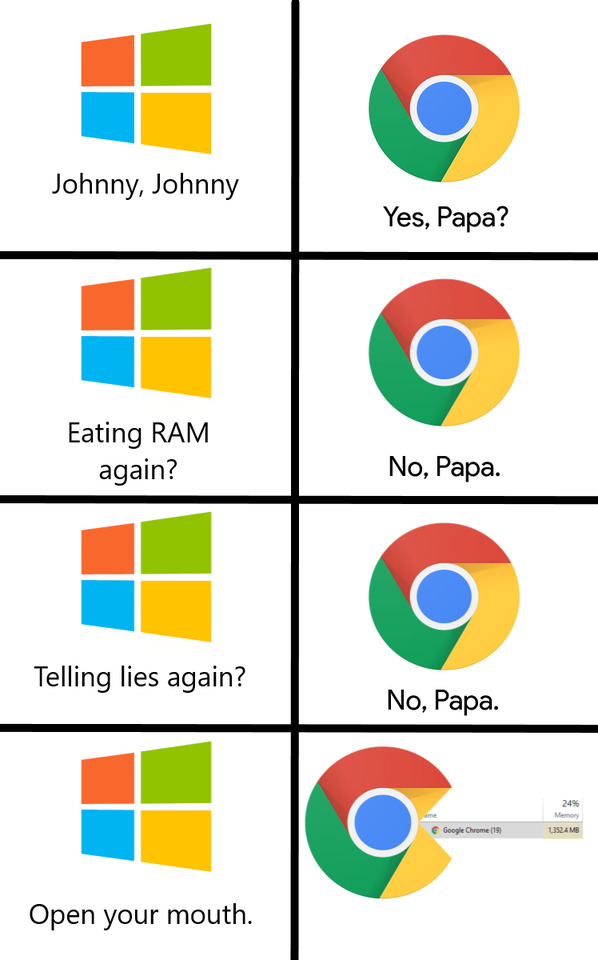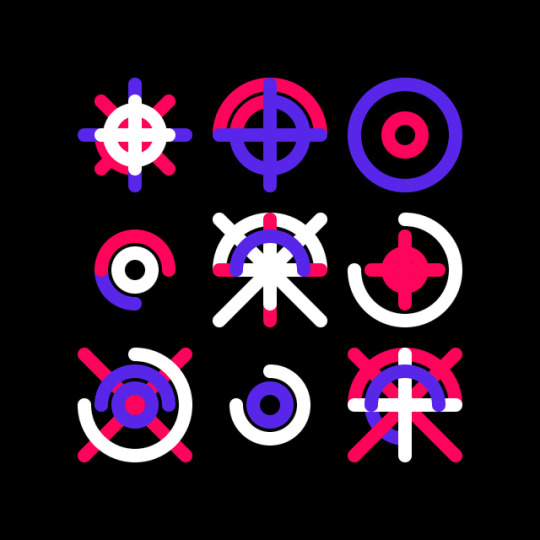Internet Web Agency Project Based, Here to share any and all valuable information from around the web. Bringing a diverse system of collective information right to your phone. Making you rethink how you gain and use information in a fun and comic way. Advocator of the progressive movement. Dallas, Texas BxMark.net *Disclaimer: Any of the content We post or reblog is not ours, unless stated other wise. Copyright belongs to creators of the content that can be found in the source of the reblog.
Don't wanna be here? Send us removal request.
Text
“mickle : (archaic, now chiefly Scotland) To a great extent. (obsolete) Frequently, often.”
— https://en.wiktionary.org/wiki/mickle#English
2 notes
·
View notes
Photo
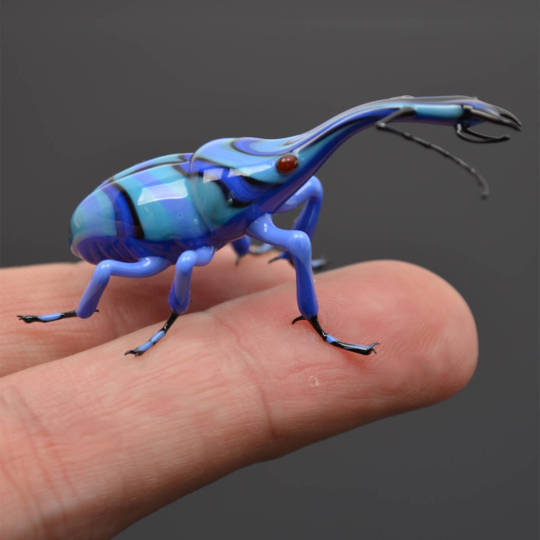
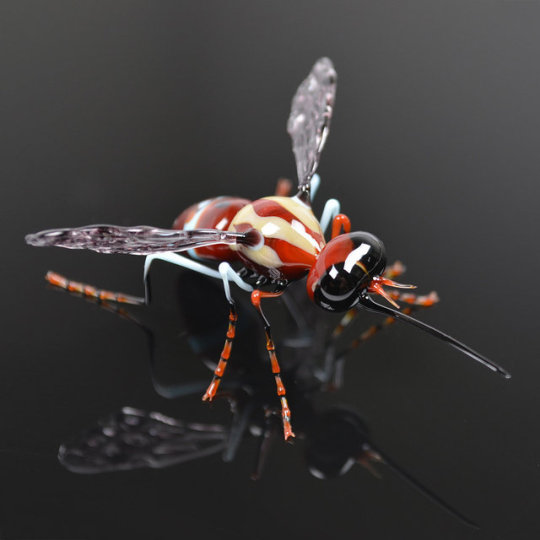
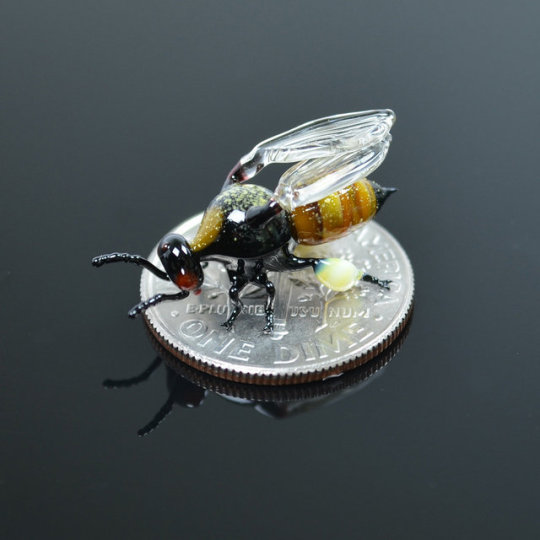
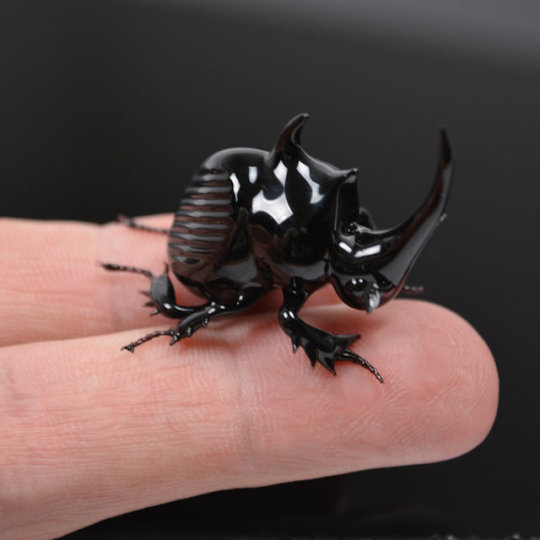
Glass Insects Small Enough to Balance on the Tip of Your Finger by Wesley Fleming
9K notes
·
View notes
Text
Keeping an Eye on Hurricane Florence
What do hurricanes look like from space? It depends on how you look! We have satellites, cameras and instruments all working together to give us the big picture of storms like Florence.
As the International Space Station passed over Hurricane Florence, astronauts and cameras on board got a look down into the hurricane’s eye.
youtube
Our Global Precipitation Measurement (GPM) mission sees storms all around the planet by measuring rainfall. These measurements come from a constellation of satellites working together, including some from our partner organizations like the National Oceanic and Atmospheric Administration (NOAA) and the Japanese Aerospace Exploration Agency (JAXA).
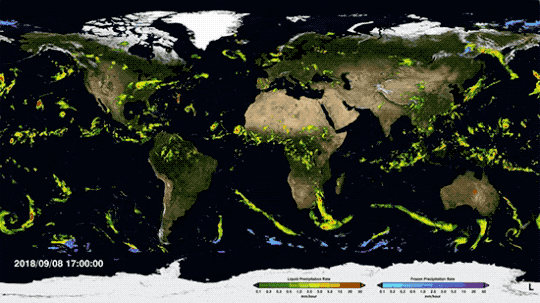
On Sept. 7, our GPM core observatory satellite flew over Florence, capturing a 3D image as the storm’s clouds started to break apart before reforming.
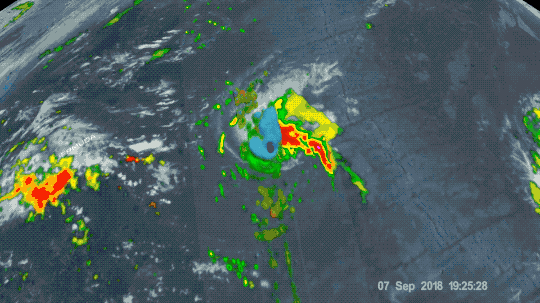
Other NOAA satellites, like GOES, gather high-resolution, detailed views of hurricanes, letting us peek into the eye of the storm.
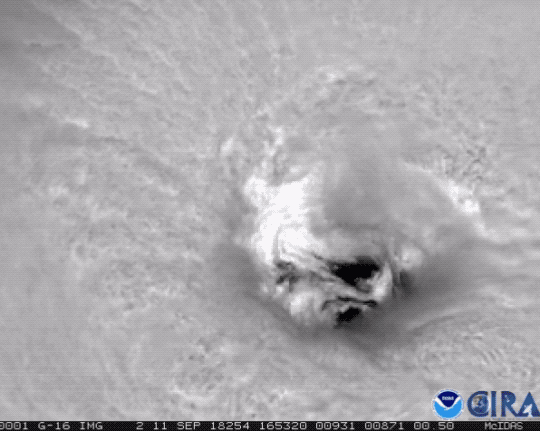
Zooming out a bit, the Suomi-NPP satellite helps us track Hurricane Florence, and the following tropical storms, as they move closer to landfall or dissipate over the ocean.
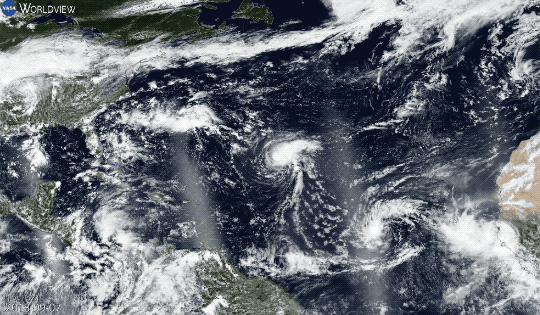
From farther away (a million miles from Earth!), the EPIC instrument on NOAA’s DSCOVR satellite captured images of all three of these storms as they moved closer to North America.
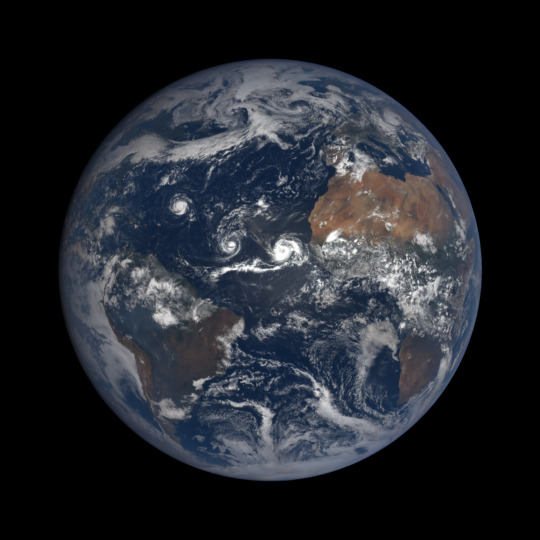
We use our space-based and airborne instruments to provide innovative data on hurricanes to advance scientists’ understanding of these storms. You can follow our latest views of Hurricane Florence here and get the latest forecast from NOAA’s National Hurricane Center here.
2K notes
·
View notes
Photo

@ubuntu : The next generation of data centre operations is here! Learn how to get your ops team ready in our on-demand webinar https://t.co/pzEx8qzJhi https://t.co/ZJ5S2MaSdd
4 notes
·
View notes
Text
them: SURVIVAL OF THE FITTEST MEANS HUMANS MUST BE INDIVIDUALLY SELF-SUFFICIENT AND COMPLETELY INDEPENDENT
biologist:

378K notes
·
View notes
Text
What’s a Blood Moon? And Other Lunar Eclipse Questions.
Tonight, Australians, Africans, Europeans, Asians and South Americans will have the opportunity to see the longest lunar eclipse of the century. Sorry North America.
Lunar eclipses occur about 2-4 times per year, when the Moon passes into the Earth’s shadow. In order to see a lunar eclipse, you must be on the night side of the Earth, facing the Moon, when the Earth passes in between the Moon and the Sun. Need help visualizing this? Here you go:
youtube
What’s the difference between a solar eclipse and a lunar eclipse?
An easy way to remember the difference between a solar eclipse and a lunar eclipse is that the word ‘eclipse’ refers to the object that is being obscured. During a solar eclipse, the Moon blocks the Sun from view. During a lunar eclipse, the Earth’s shadow obscures the Moon.
youtube
Why does the Moon turn red?
You may have heard the term ‘Blood Moon’ for a lunar eclipse. When the Moon passes into the Earth’s shadow, it turns red. This happens for the exact same reason that our sunrises and sunsets here on Earth are brilliant shades of pinks and oranges. During a lunar eclipse, the only light reaching the Moon passes through the Earth’s atmosphere. The bluer, shorter wavelength light scatters and the longer wavelength red light passes through and makes it to the Moon.
youtube
What science can we learn from a lunar eclipse?
youtube
“During a lunar eclipse, the temperature swing is so dramatic that it’s as if the surface of the Moon goes from being in an oven to being in a freezer in just a few hours,” said Noah Petro, project scientist for our Lunar Reconnaissance Orbiter, or LRO, at our Goddard Space Flight Center in Greenbelt, Maryland.
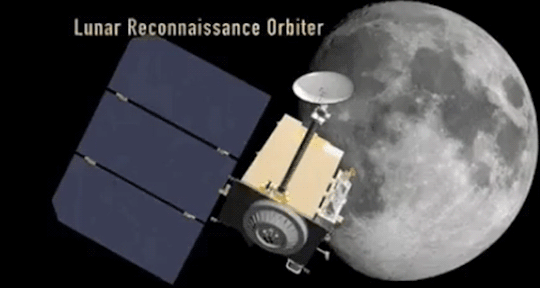
The Diviner team from LRO measures temperature changes on the Moon through their instrument on the spacecraft as well as through a thermal camera on Earth. How quickly or slowly the lunar surface loses heat helps scientists determine characteristics of lunar material, including its composition and physical properties.
When is the next lunar eclipse?
North Americans, don’t worry. If skies are clear, you can see the next lunar eclipse on January 21, 2019. The eclipse will be visible to North Americans, South Americans, and most of Africa and Europe.
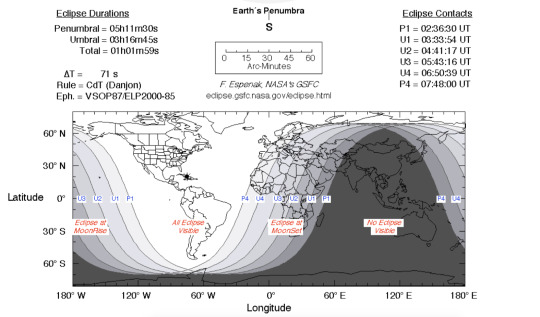
To keep an eye on the Moon with us check out nasa.gov/moon or follow us on Twitter and Facebook.
Make sure to follow us on Tumblr for your regular dose of space: http://nasa.tumblr.com.
4K notes
·
View notes
Text
Solar System 10 Things to Know: Planetary Atmospheres
Every time you take a breath of fresh air, it’s easy to forget you can safely do so because of Earth’s atmosphere. Life on Earth could not exist without that protective cover that keeps us warm, allows us to breathe and protects us from harmful radiation—among other things.
What makes Earth’s atmosphere special, and how do other planets’ atmospheres compare? Here are 10 tidbits:
1. On Earth, we live in the troposphere, the closest atmospheric layer to Earth’s surface. “Tropos” means “change,” and the name reflects our constantly changing weather and mixture of gases.
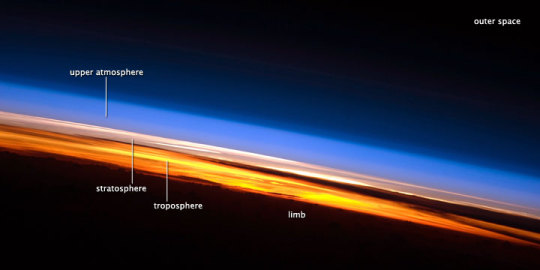
It’s 5 to 9 miles (8 to 14 kilometers) thick, depending on where you are on Earth, and it’s the densest layer of atmosphere. When we breathe, we’re taking in an air mixture of about 78 percent nitrogen, 21 percent oxygen and 1 percent argon, water vapor and carbon dioxide. More on Earth’s atmosphere›

2. Mars has a very thin atmosphere, nearly all carbon dioxide. Because of the Red Planet’s low atmospheric pressure, and with little methane or water vapor to reinforce the weak greenhouse effect (warming that results when the atmosphere traps heat radiating from the planet toward space), Mars’ surface remains quite cold, the average surface temperature being about -82 degrees Fahrenheit (minus 63 degrees Celsius). More on the greenhouse effect›

3. Venus’ atmosphere, like Mars’, is nearly all carbon dioxide. However, Venus has about 154,000 times more carbon dioxide in its atmosphere than Earth (and about 19,000 times more than Mars does), producing a runaway greenhouse effect and a surface temperature hot enough to melt lead. A runaway greenhouse effect is when a planet’s atmosphere and surface temperature keep increasing until the surface gets so hot that its oceans boil away. More on the greenhouse effect›

4. Jupiter likely has three distinct cloud layers (composed of ammonia, ammonium hydrosulfide and water) in its “skies” that, taken together, span an altitude range of about 44 miles (71 kilometers). The planet’s fast rotation—spinning once every 10 hours—creates strong jet streams, separating its clouds into dark belts and bright zones wrapping around the circumference of the planet. More on Jupiter›
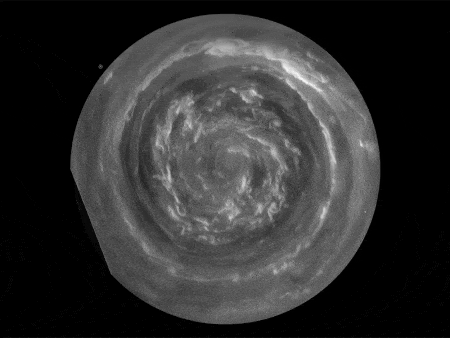
5. Saturn’s atmosphere—where our Cassini spacecraft ended its 13 extraordinary years of exploration of the planet—has a few unusual features. Its winds are among the fastest in the solar system, reaching speeds of 1,118 miles (1,800 kilometers) per hour. Saturn may be the only planet in our solar system with a warm polar vortex (a mass of swirling atmospheric gas around the pole) at both the North and South poles. Also, the vortices have “eye-wall clouds,” making them hurricane-like systems like those on Earth.
Another uniquely striking feature is a hexagon-shaped jet streamencircling the North Pole. In addition, about every 20 to 30 Earth years, Saturn hosts a megastorm (a great storm that can last many months). More on Saturn›

6. Uranus gets its signature blue-green color from the cold methane gas in its atmosphere and a lack of high clouds. The planet’s minimum troposphere temperature is 49 Kelvin (minus 224.2 degrees Celsius), making it even colder than Neptune in some places. Its winds move backward at the equator, blowing against the planet’s rotation. Closer to the poles, winds shift forward and flow with the planet’s rotation. More on Uranus›
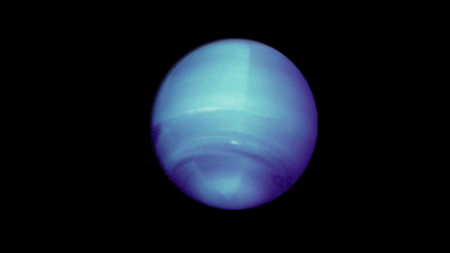
7. Neptune is the windiest planet in our solar system. Despite its great distance and low energy input from the Sun, wind speeds at Neptune surpass 1,200 miles per hour (2,000 kilometers per hour), making them three times stronger than Jupiter’s and nine times stronger than Earth’s. Even Earth’s most powerful winds hit only about 250 miles per hour (400 kilometers per hour). Also, Neptune’s atmosphere is blue for the very same reasons as Uranus’ atmosphere. More on Neptune›

8. WASP-39b, a hot, bloated, Saturn-like exoplanet (planet outside of our solar system) some 700 light-years away, apparently has a lot of water in its atmosphere. In fact, scientists estimate that it has about three times as much water as Saturn does. More on this exoplanet›

9. A weather forecast on “hot Jupiters”—blistering, Jupiter-like exoplanets that orbit very close to their stars—might mention cloudy nights and sunny days, with highs of 2,400 degrees Fahrenheit (about 1,300 degrees Celsius, or 1,600 Kelvin). Their cloud composition depends on their temperature, and studies suggest that the clouds are unevenly distributed. More on these exoplanets›
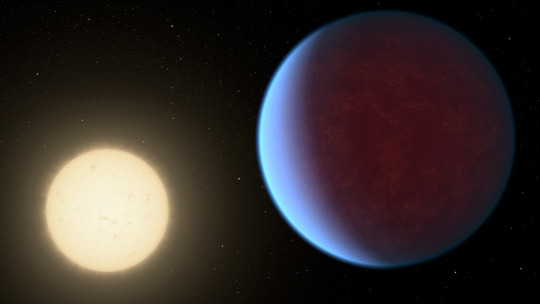
10. 55 Cancri e, a “super Earth” exoplanet (a planet outside of our solar system with a diameter between Earth’s and Neptune’s) that may be covered in lava, likely has an atmosphere containing nitrogen, water and even oxygen–molecules found in our atmosphere–but with much higher temperatures throughout. Orbiting so close to its host star, the planet could not maintain liquid water and likely would not be able to support life. More on this exoplanet›
Read the full version of this week’s Solar System 10 Things to Know HERE.
Make sure to follow us on Tumblr for your regular dose of space: http://nasa.tumblr.com.
4K notes
·
View notes
Photo

Riffle-shuffling ten elements six times restores the initial order at three o'clock. I learned this doing the Project Euler problem 622.
744 notes
·
View notes
Photo

Ray Kurzweil: Universal Basic Income will arrive in the 2030s https://ift.tt/2GWHfvM
4 notes
·
View notes
Photo
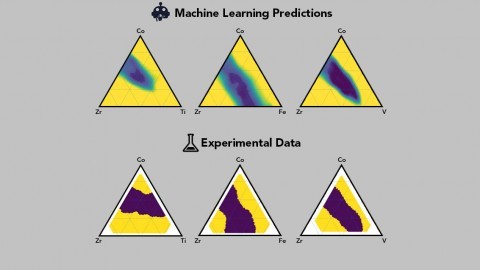
Artificial intelligence accelerates discovery of metallic glass - Machine learning algorithms pinpoint new materials 200 times faster than previously possible https://ift.tt/2qw7rCq
13 notes
·
View notes
Text
WHEN A PROGRAMMER DOESN’T KNOW HOW TO EXPLAN LIFE
(US)_areLOOP_SPIRAL (Energy)(Class, Model, Object)
OfLIfe#{ENERGY_SENSE_TOUCH} - {FEEL,SEE,TOUCH} - (BEING, WHAT ARE YOU GOOD AT){Time=Variable(factor) of}[BEING][1,2,3] - Persistence {IT, DEVOPS}
Sentient_Conscious (AI,APP,CONNECTION,DATABASE, INFORMATION) -
- NOUN PERSON PLACE OR THING
1) Beginning Of - SELF - POWER - REALIZE SELF - BEING - AWARE of YOU ARE - GOD - EXIST IT'S IN YOU (Realize) - Self (_1stPov) - Ask GOD - Manifest Believe - (You will feel it move you) - Being (_2ndPov) - When You find You Self Take Care - Awareness(_3rdPov) - (Look ahead, observe your mistake and correct them to not happen again) | This is the hardest part and the tying it all together consistently - ugh Escalation (You, Principals,) - Being (Purpose, Christ, Do) - Awareness (God, Holy Spirit, Vibes)Self - Being - Aware
2) WATER WHAT YOU HAVE - BEING - CONTROL OF
(Yourself, JOB, Life, Mind, People(Not only do you feed yourself but so do others), Business, Principals) 1) Give the ground(UI, Website) a seed Input by the user or Action.(Users signing up, Getting access to other private post, pages, server ports(responsible)2) Water the ground around the seed _Becareful here water it too much you might drown it(yourlife.others.job) in (emotion,business,law You have to be in it, like soak your self and immerse in it, be obsessive in your mind - attentive to it,3) Give it some time Due dilligence - sometimes for good to happen bad must things must happen(win with patience, and consistency -4) Give it some focus 5) Sometimes you step over you
3) CORRECT FEEDING
Mind(Me,Self, Aware) (create, by doing or not) => (Patterns, Waves, Rhymes) => (Turns Into) (Cycles, Curses, Blessings) Patterns - (habits, how often you do it) Waves - (Intent, Strength, Realness, Pull-Push) Rhymes - (How it looks) DON'T STOP PLAYING SCALES When you don't receive the maestro audience you're masterful will be at. IT HURTSYOU WANT TO SAY FUCK IT {VARIABLE IMPORTANT! how you react here} Sometimes you are still at a rehearsal page. AND IT'S OK.
LOVE is a Teacher a Grower - MAY HURT {Option to bring hurt}
if HURT
MIGHT REPEAT (&get stuck)
LET'S WORK TOGETHER TO GROW }
0 notes
Link
6 notes
·
View notes
Text
How is the Java compiler compiled? :https://t.co/uD1R5WMjGL https://t.co/y2DBqfZMzI
How is the Java compiler compiled? :https://t.co/uD1R5WMjGL pic.twitter.com/y2DBqfZMzI
— Ibrahim Haouari (@ibrahim_haouari) October 13, 2017
2 notes
·
View notes
Text
Live Twitter Update:
Breaking #FoxNews Alert : Amazon executive Roy Price suspended as sexual harassment accusations surface [Access my tweet at http://twitter.com/JohnsWebDev/status/918635830071218176]
2 notes
·
View notes
